This week’s guest comes from Jon Wheatley, documenting the process of taking an idea from some rough notes in a legal pad to a finished product. Take it away Jon…
Making a physical product.
I had been kicking around the idea for some kind of space themed dice game for a while. I thought it would be a really nice metaphor for what actually happens when galaxies are formed. The dice represent balls of matter floating around the universe. Sometimes they bump into other balls of matter and become stuff.
I decided to design the game around the “press your luck” genre. The concept of these games is usually pretty simple. Some things are good to roll and some things are bad. The goal is to roll as many good things as you can before rolling a bad thing and resetting your score. The first person to get X good things is the winner.
The goal with Space Dice is to roll as many “habitable planets” as possible, before you roll 3 black holes and make your galaxy unstable. A “habitable planet” is a planet near at least 1 star and without space debris hurtling towards it. The first person to roll 10 habitable planets is the winner.
Here’s a VERY early prototype of the game I was working on over Christmas. It really helped to make a prototype, as I could actually play the game rather than everything being hypothetical.
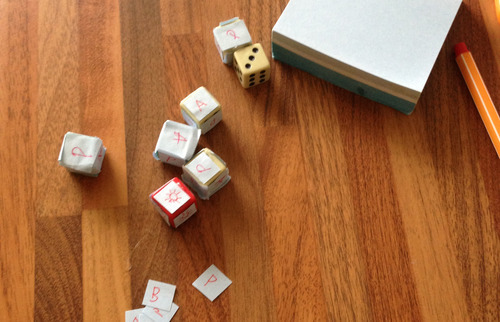
Having finalized the basic concept, I needed to make sure the game would actually be playable. There should be a good chance of rolling the things you need to roll to score. It shouldn’t be likely to die in one roll. Rolling a supernova (which destroys every planet every player has scored up until that point) shouldn’t happen very often etc.
I spent a few hours hacking together a little rails app which would play out 100,000 rolls in a few seconds and tell me the chances of everything coming up. The script let me easily play around with the values on each of the dice and tweak the chances of everything happening. It’s still online if you want to look at it (http://spacedice.herokuapp.com) and the code is on github (https://github.com/jonwheatley/Space-Dice-Stats). Please excuse my bad ruby code.
I hired a graphic designer to make some nice icons. I was ready to start talking to factories.
I looked on alibaba.com and found some dice manufactures in China. It turns out 12 sided dice are MUCH more expensive than regular 6 sided dice (about $0.25 per dice vs $0.05). I reluctantly decided to go with the 12 sided dice anyway, because the shape of them worked much better with the theme. Rarely do you see celestial bodies that are square!
The factory did a test print and made a complete set of space dice. Now it was starting to become real!
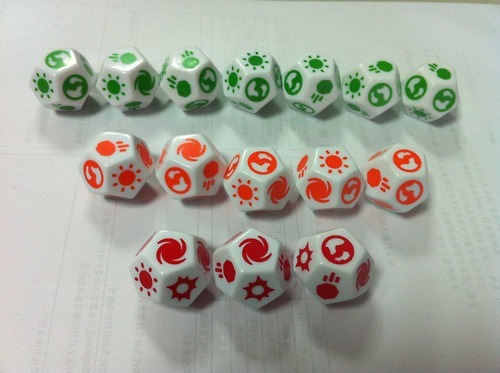
The factory was happy to ship out the tester dice they made before entering full production. Luckily, this coincided nicely with Chinese New Year so I had a bit of time to play test the game and request any changes. When I received the package, I excitedly opened it and anxiously waited for my girlfriend to get home so we could play Space Dice for the first time.
I may be a little biased here, but the game was great fun. Everything worked as intended, and my girlfriend picked it up pretty quickly. The only thing that was a little awkward was keeping score of how many habitable planets each of us owned. We solved this by using a pen and paper to keep track, but I’m planning on building a simple Space Dice score keeping iPhone app at some point.
The next step was the packaging. I found a factory in LA that made custom tubes with removable tops. This was good because the tube could also double as the dice shaker. They were nice enough to send over some pictures of the tubes being made.
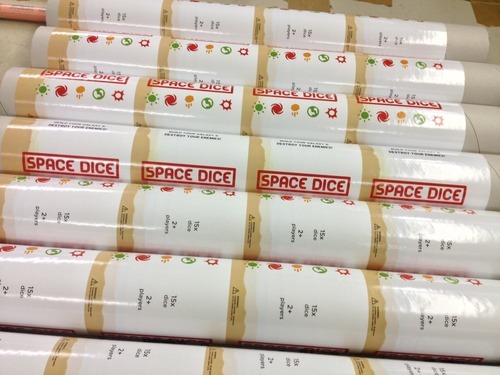
The last thing I needed was instructions. This turned out to be a much harder task then I was anticipating. There were a lot of things that seemed obvious to me that absolutely were not obvious to other people when I spoke to them. It was also hard to explain all the rules, including rare edge cases, while keeping the instructions short and not intimidating to new players. I needed professional help.
I hired a freelance copywriter to give me a hand which made things much easier. There was still a fair amount of back and forth until we decided on the best way to structure and word everything (it didn’t help that Sam had never played the game before!) but we eventually hammered out some pretty decent instructions.
They just needed some design (thanks David!) and they were ready.
Everything arrived at my apartment and I started packaging sets together. This took much longer than I thought it would (1.5ish minutes per set, 333 sets, just over 8 hours).
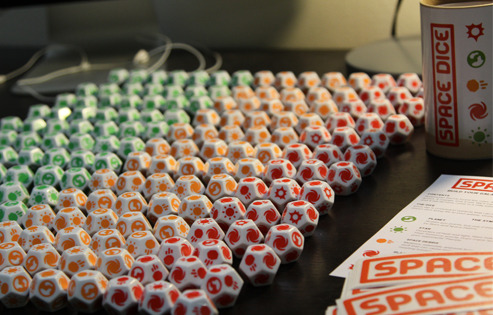
And here it is. The final, completed set of space dice in all its glory.
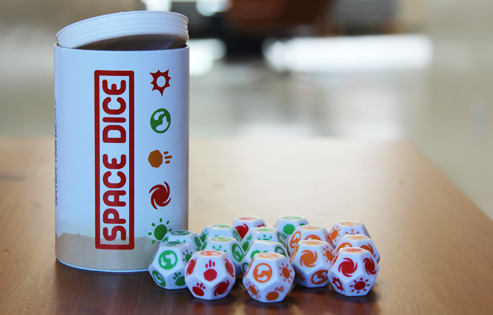
Costs
Design (logo, icons, website): $1,500
Domain: $69
Coding + shopify integration: $150
5,000 dice + shipping: $1,808 ($0.36 per dice, enough dice for 333 sets)
350 packaging tubes + shipping: $722.50 ($2.06 per tube)
350 instruction sheets: $290.99 ($0.83 per sheet)
350 stickers: $119.95 ($0.34 per sticker)
Total for project: $4,660.44
Breakdown per set
15 * dice: $5.40
1 * tube: $2.06
1 * instructions: $0.83
1 * sticker: $0.34
Total cost per set: $8.63
Current price per set: $20
Net profit per set sold: $11.37
The margins aren’t great right now, but I think at a slightly larger scale I can get the price down to about $5 per set.
Head over to spacedice.com if you’d like to buy a copy of Space Dice. If you’re interested in following other projects I’m working on, you should follow me on Twitter here.
Thanks Jon, look out for my first impressions review of Space Dice soon…
Comments
Post a Comment